Diversity in the Media
“Good intentions are not enough”
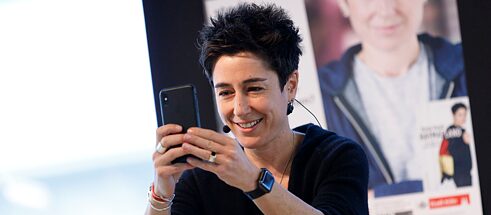
Too few journalists with an ethnic minority background or from disadvantaged social groups: the fact that the media industry is not diverse enough is increasingly being seen as a problem – including and above all by media professionals themselves. Yet, how can we succeed in bringing more diversity into editorial departments? The journalist network “Neue deutsche Medienmacher*innen” recommends specific strategies.
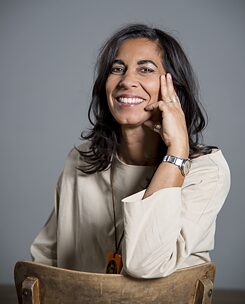 After eight years as chairperson, journalist Sheila Mysorekar is now on the board of directors of the network Neue deutsche Medienmacher*innen (NdM).
| Photo (detail): © Brigitta Leber
Ms. Mysorekar, you have been chairperson of “Neue deutsche Medienmacher*innen” (New German Media Professionals; NdM) for many years and you’ve been involved in the network from the start. Who are the NdM and how did they get together?
After eight years as chairperson, journalist Sheila Mysorekar is now on the board of directors of the network Neue deutsche Medienmacher*innen (NdM).
| Photo (detail): © Brigitta Leber
Ms. Mysorekar, you have been chairperson of “Neue deutsche Medienmacher*innen” (New German Media Professionals; NdM) for many years and you’ve been involved in the network from the start. Who are the NdM and how did they get together?
We are media professionals – primarily but not exclusively coming from families with a migration biography – and we’re calling for more diversity. When we founded the association ten years ago, we wanted to support each other because as journalists with an international history we often felt isolated amongst the editorial staff.
More diversity in the media – what does that mean for the NdM?
It’s about having a variety of staff in editorial roles, but also in media representation, topics and perspectives. Ultimately, it’s all about good journalism. We live in a diverse society, but editorial teams are often very homogeneous. If voices reflecting the diversity are not being heard, key aspects of reporting are missing. It’s partly about participation, but it isn’t just minorities who are impacted if we are all poorly informed.
The NdM has publicly criticised the way topics are reported in the media on repeated occasions – in reference to stories on criminality, society or overseas. The NdM also wants to encourage more diversity amongst journalists themselves. How are you trying to achieve that?
For example: we have a mentoring project in which established journalists support up-and-coming journalists from migrant families as they build their career. In the media, contacts are very important – and many children of immigrant families don’t have those. Our view on the world is shaped by the media. If the editorial staff are more diverse, more insight into different living environments is gained, which means increased media competence.
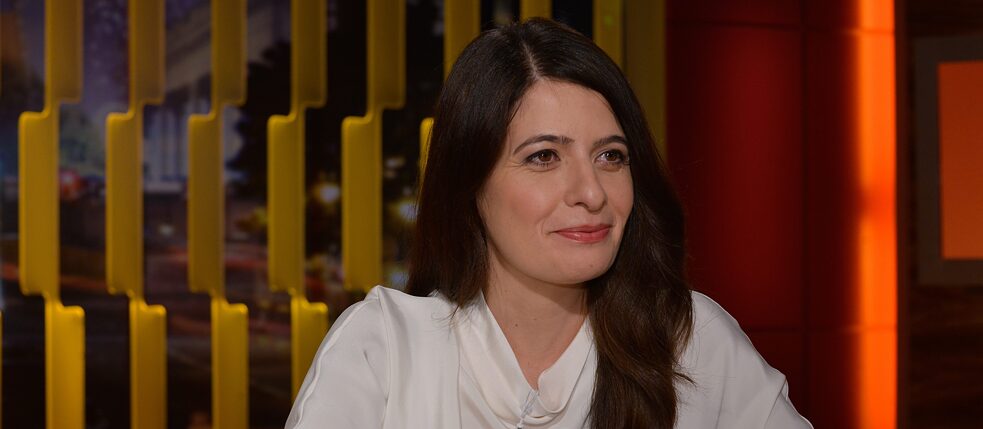 Her origins are always a subject of discussion, there are regular news reports about her: Linda Zervakis, the daughter of Greek migrants, presented “Tagesschau” – Germany’s oldest and most important news programme – from 2013 to 2021.
| Photo (detail): © picture alliance/ZB/Karlheinz Schindler
So it also involves a lot of awareness work?
Her origins are always a subject of discussion, there are regular news reports about her: Linda Zervakis, the daughter of Greek migrants, presented “Tagesschau” – Germany’s oldest and most important news programme – from 2013 to 2021.
| Photo (detail): © picture alliance/ZB/Karlheinz Schindler
So it also involves a lot of awareness work?
Yes. The BBC’s 50:50 Equality Project is a good example of how awareness can be created: for one week, every journalist counts how many women feature in their own stories – how many women have I interviewed, how many female protagonists have I chosen etc. – and compares the result with colleagues. Consequently, more women rapidly become involved because awareness is heightened. This can be done in a similar way for people from ethnic minorities – or for other under-represented fringe groups. How many immigrants, working-class children, East Germans or women are mentioned in the articles, how many have I interviewed? This approach can be used to increase diversity at different levels.
What else is necessary?
It’s essential for this to be controlled and supported by the management. Fixed targets need to be specified; good intentions are not enough. This was also apparent with the attempt to bring more women into boardrooms. It’s taking a long time and it’s very tough. Things only change in companies when a minority reaches a critical mass of 30 per cent; we know this now.
So is a lack of diversity even considered as a problem?
Yes! The NdM has recently brought out a Diversity Guide, a toolbox for media houses that wish to become more diverse. The demand is huge; we’re literally overwhelmed, many people want supplementary advice as well. So the problem is acknowledged – the question is how we solve it. A deciding factor is that with more diversity in your media house, you can target different audiences – especially younger ones. They find it strange when TV shows always feature the same old white men, and they’d like to see more diverse faces and topics. If you want to be prepared for the future, you have to embrace diversity.
So it’s about target audiences as well?
The BBC project has shown that the more women were shown, the more women listened. So diversity is also a promise of success, rather than just being something nice to have or politically correct. It’s a way of gaining new target audiences, in particular younger ones. A quarter of all Germans have a migration background. If you look at the younger population and in some cities it’s even more than half. These aren’t minorities anymore. That’s a convincing factor for large media companies and smaller papers alike, which is why the demand is so great. We are the only organisation in Germany to represent diversity in this way.
The exact content of the reports is important too, is it?
That’s the point, more normality is required. Migrants often become visible only in association with crime reporting. But it’s important to hear their opinions regarding other issues too, whether it’s cycle paths, architecture projects or childcare or whatever.
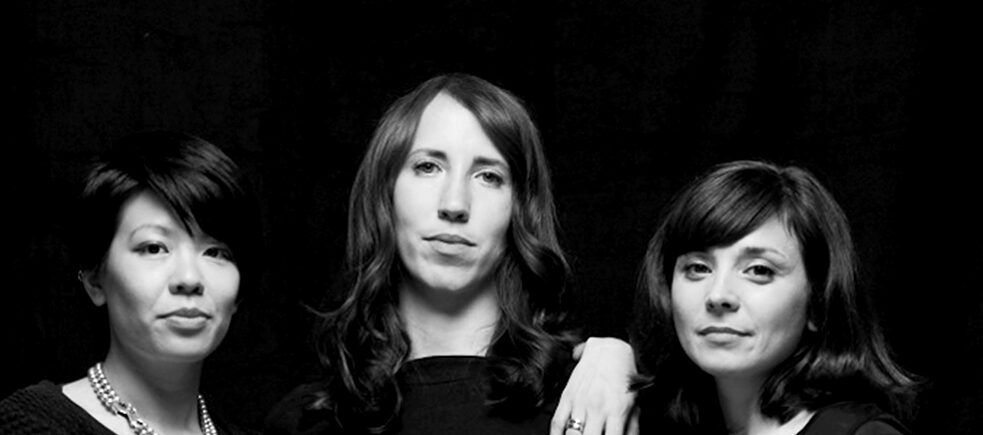 Ten years ago journalists with a migration background were often isolated in their field: because they frequently felt excluded, Die Zeit journalists Alice Bota, Khue Pham and Özlem Topcu (left to right) published their book “Wir neuen Deutschen” (i.e. we new Germans) in 2012.
| Photo (detail): © picture alliance/dpa/Jens Boldt/Rowohlt
What role does language play?
Ten years ago journalists with a migration background were often isolated in their field: because they frequently felt excluded, Die Zeit journalists Alice Bota, Khue Pham and Özlem Topcu (left to right) published their book “Wir neuen Deutschen” (i.e. we new Germans) in 2012.
| Photo (detail): © picture alliance/dpa/Jens Boldt/Rowohlt
What role does language play?
There are still many stereotypes that are clearly expressed through language. If a white man kills his family, it’s a “family tragedy”. If he’s of Turkish origin, it’s an “honour killing”. How can stories like this be reported without being discriminatory? One of our early projects was a glossary – day-to-day wording guidance for editorial staff – as a response to coverage of the NSU story. Journalists were still writing about “Dönermorde” (kebab killings) long after it became clear that Nazis were responsible. It is possible to express things differently. Many people were interested in our glossary, including teachers’ unions and the police. If negative stereotypes are repeated constantly, it reinforces the discrimination against minorities. The image becomes distorted and poses a risk to social harmony. It’s bad for the whole of society.
How can we change this?
We go to editorial rooms, criticise their publications, have discussions. Words like “islamisation”, which were coined by the extreme right, have now become normal. Many of our colleagues in the media houses don’t even notice. That’s problematic.
Is Germany having a particularly hard time with media diversity then?
Germany’s clearly lagging behind. In the United Kingdom and the USA diversity is a matter of course; in fact they explicitly ensure criteria are met. Consequently, it doesn’t seem odd for a news presenter to be wearing a hijab, a headscarf. In contrast, here it was private TV channels that first employed Afro-German presenters even 20 years ago – because they always targeted younger audiences.
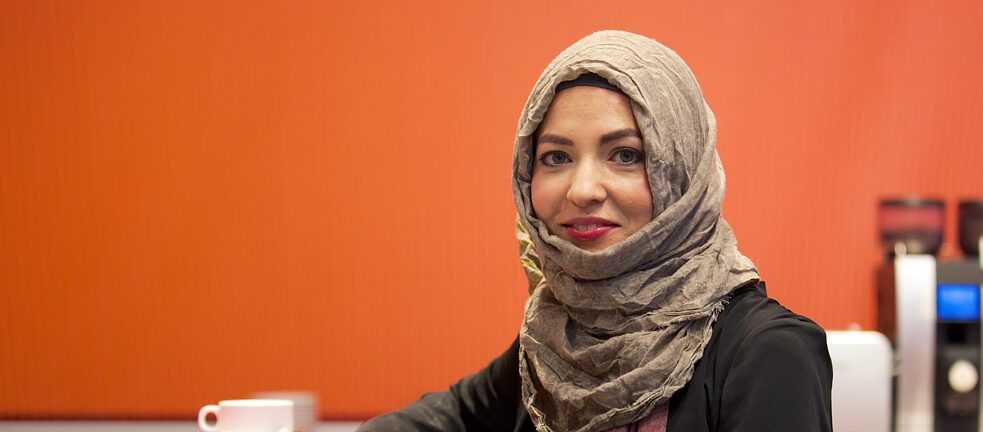 Khola Maryam Huebsch, a journalist with a headscarf – something that’s been normal in the UK or USA for a long time is still the exception in Germany.
| Photo (detail): © picture alliance/Erwin Elsner
I’m sure not everyone’s happy with what you’re doing...
Khola Maryam Huebsch, a journalist with a headscarf – something that’s been normal in the UK or USA for a long time is still the exception in Germany.
| Photo (detail): © picture alliance/Erwin Elsner
I’m sure not everyone’s happy with what you’re doing...
No, we are subject to a lot of attacks. We receive hate mails and threats from right-wing groups. We ignore some of them, but anything that’s against the law is reported. However, we continue to put up a fight against the right. There’s a strong headwind, but our clear stance is respected. We’ve just had another large influx of new members.